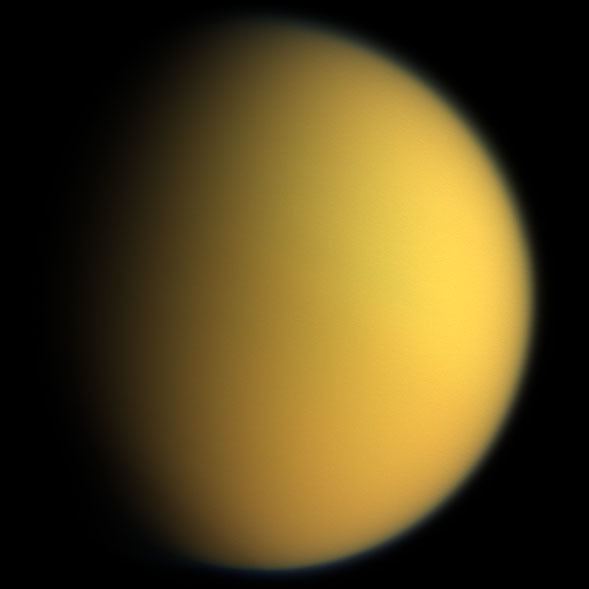 | ||
Vid Flumina is a river of liquid methane and ethane on Saturn's moon Titan. The river has been compared to the Nile. It is more than 400 km (249 mi) long and flows into Titan's second largest hydrocarbon sea, Ligeia Mare.
Contents
Earlier Findings
In 2004, NASA's probe, Cassini arrived at Saturn to study it and its moons. The scientists at NASA were expecting to find some evidence for liquid methane because of Titan's surface temperature and its methane-rich atmosphere. However, Cassini's early findings that were focused on Titan's equator revealed no traces of seas or rivers. The early disappointment changed as the Cassini's orbit shifted and allowed the researchers at NASA to bounce radar off other regions of the moon. The radar signals were then routinely reflected off angled, rough features such as sand dunes and rocks and cliffs, but when the radar reached the polar regions of Titan, the regular signals ceased. These non-reflecting dark spots where actually reminiscent of the lakes, rivers and tributaries on Earth.
Discovery of the river
In December 2012, Jani Radebaugh, the scientist on Cassini team along with an international team of colleagues, announced that they had discovered a liquid methane river of over 200 miles resembling the Nile from an image taken on 26 September 2012.
Geology
The river flows along a relatively straight course, suggesting that it follows one or more fault lines, similar to other large nearby rivers. The river slices through a rough and slanted terrain, which suggests operation of processes similar to tectonic movements on Earth.
Radar studies show that Vid Flumina and its tributaries flow through canyons up to nearly one km wide and 0.57 km deep, with slopes of around 40°. Flowing methane was detected in the channels. The elevation of the main channel was found to be within 1 m of that of Ligeia Mare, while tributary channels have higher elevations. The canyons are believed to have formed by erosion stimulated either by uplift of the area or a decline in the level of Ligeia Mare.
